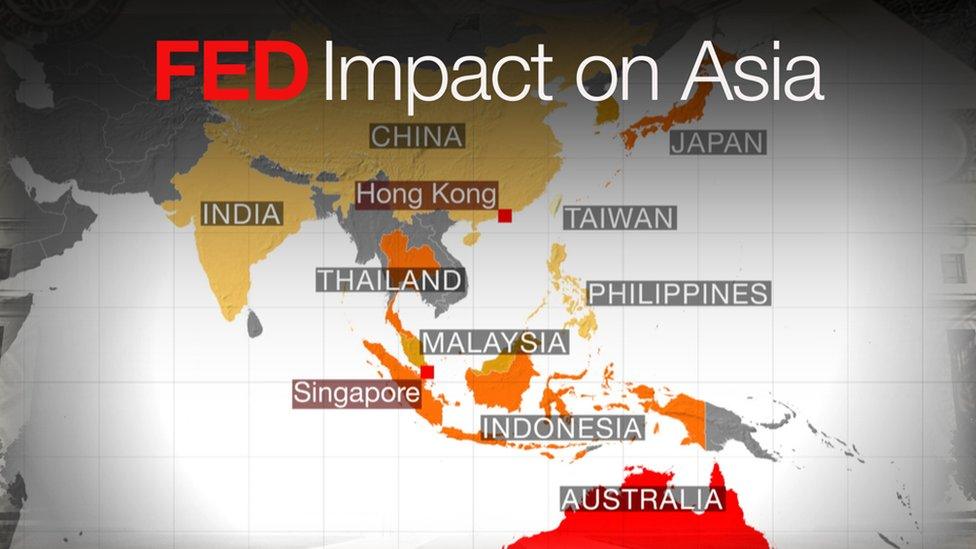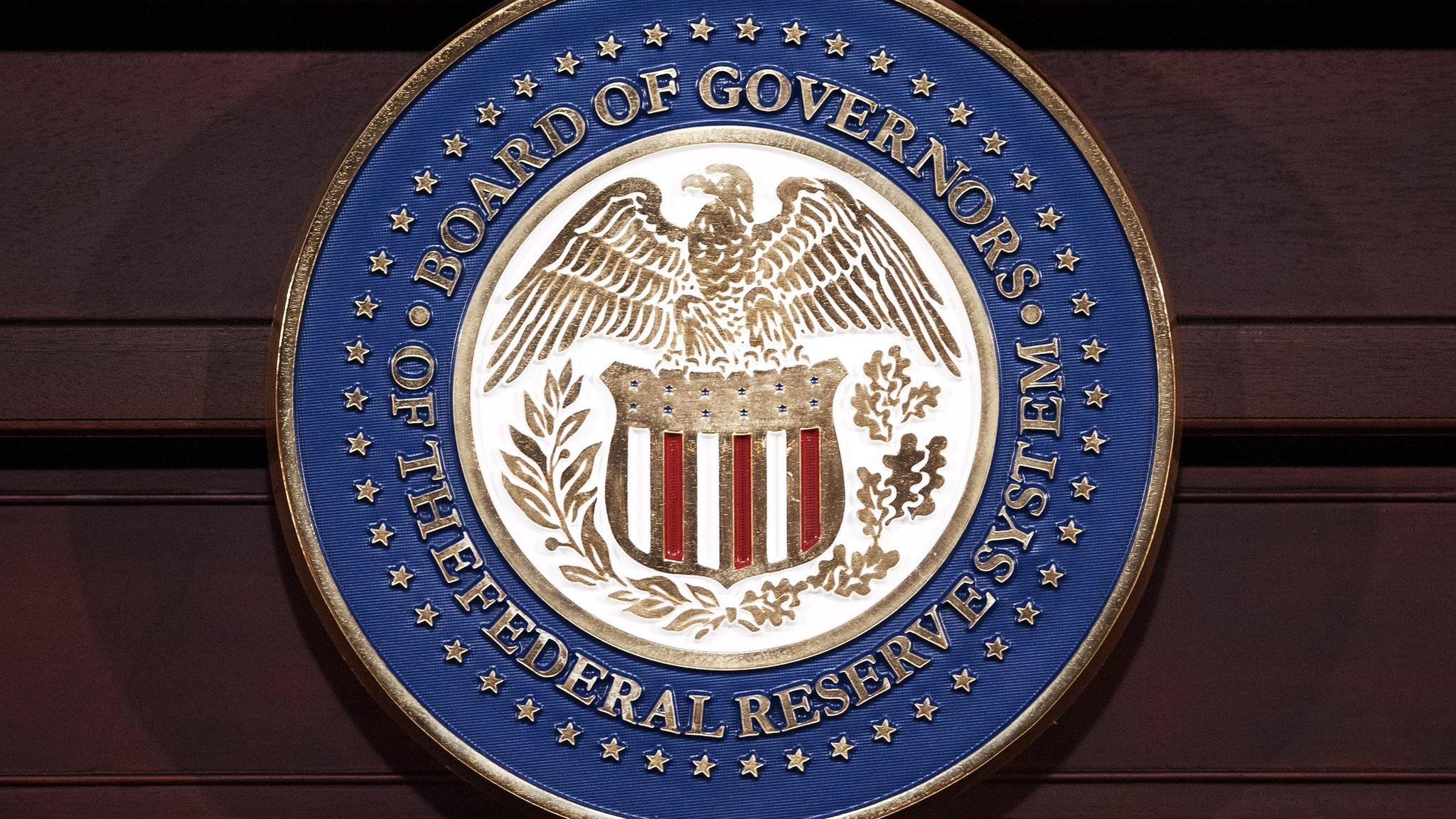Asia reacts to US rate hike with relief
- Published
- comments

As Asia's investors take in the long-awaited US rate hike, there's an obvious sense of relief - you can see it reflected in share prices across the region.
But it's not the first rate rise that's going to hurt Asian economies or Asian businesses. It's the further increases expected in 2016 that will put pressure on Asian currencies.
Take a look at this chart - the winners and losers in Asia after the Fed decision.

Some countries will benefit - a weaker Japanese yen for instance makes Japanese goods cheaper overseas.
Australia is hoping to see its currency weaken further against the dollar in the coming months - and rising US interest rates should help put some more downwards pressure on it into next year.
But other countries with domestic issues - like Malaysia - which is an oil-exporting nation and is struggling with the burden of lower commodity prices - could see its currency slump even lower. It's already fallen by a fifth this year in anticipation of this US rate rise.
Meanwhile China has set the midpoint rate for the yuan weaker again, for a ninth straight session, post the Fed meeting. At 6.4757 per US dollar it's the weakest point for the yuan since mid July 2011.
A weaker yuan is good for Chinese exporters, and China may also be shielded from the Fed fallout because it holds a lot of US dollar reserves.
But weaker emerging markets currencies will make it more expensive for some businesses in the region to pay back their debts, and it puts pressure on Asian central banks to raise interest rates at a time when their economies are slowing.
Hong Kong's monetary authority which closely tracks the US has already raised rates - while Indonesia and the Philippines meet later today to decide what to do.
- Published16 December 2015

- Published16 December 2015

- Published15 December 2015
